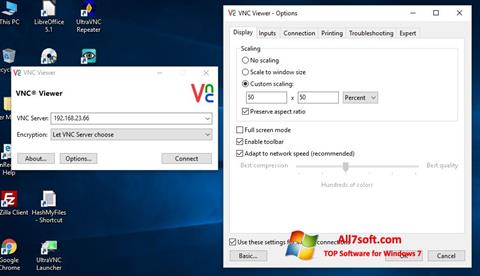
#SERVER VNC WINDOWS MAC#
Oftentimes after closing the viewer, the Mac would freeze yet again, requiring a reset.The other options appeared to work, but seemed to cause some minor freeze-ups on the Mac. Set the “Preferred Encoding” to either “Raw” or “ZRLE”.Of course, you will not be able to share the clipboard across the host and client machines, but at least the host machine will continue running properly. Enable “Disable clipboard transfer.” This was a major issue that would cause freezing immediately upon on connect unless enabled.The viewer will prompt for a password, but once connected, will not display the actual desktop unless no users are logged in on the host. To prevent receiving a patterned, gray screen after the login, be sure to logout of your current user on your Mac first.I’m using TightVNC, so these changes may or may not be necessary on other viewers. As I mentioned before, I had some issues connecting from Windows, and had to take a few precautions. You should (in theory) be able to connect to your Mac with any viewer using your machine’s IP address and the port. You should now have a VNC server running on the standard port 5900 of your machine. Step 5 – Click on Options and enable any other permissions you may need.
#SERVER VNC WINDOWS PASSWORD#
Step 4 – Provide a password and click “OK”. Step 3 – Click on Computer Settings and enable “VNC viewers may control screen with password.” Step 2 – Enable either the Screen Sharing or the Remote Management checkboxes. Step 1 – Go to your System Preferences and under the Internet and Wireless heading, click on Sharing. Screen Sharing is what the “average” VNC user may need, while the latter is helpful if you need more permissions and control over the host machine. The two options are either Screen Sharing or Remote Management. I am running 10.7.5 (Lion), so your steps may vary slightly.įirstly, you need to allow VNC connections. Here are some of the tweaks I had to make to ensure I could connect without issues.
#SERVER VNC WINDOWS WINDOWS#
However, when connecting from a Windows machine (particularly when running TightVNC as the viewer), I found I had to configure a few extra settings to make it work without constant freezes on my Mac, forcing me to hard reset. This feature is included in a couple of the “Sharing” options and can be accessed with a regular VNC viewer/client. Ssh -L 5900:localhost:5900 start the vnc server, then point your vnc client at localhost.A little-known fact about Mac versions 10.4 (Tiger) and over, is that they come with a built-in VNC server. When you have succesfully logged ssh to your workstation: When prompted for a username and password, enter your CRSID and your admitto credentials. Click "Open" and this should ssh to citadel forwarding those ports. Then under Connection->SSH->Tunnels enter the following and click on Add.Īt this point under Session->Saved Sessions, you may wish to give it a name and save the settings.

If you are trying to connect from a windows machine you may like to use putty to set up the tunneling. Then start the VNC server and point your client at localhost.

In your ~/.ssh/config file, add the following lines substituting in the fully qualified name of your workstation:

Ssh -L 5900:localhost:5900 start the VNC server and point your client at localhost You can obtain this by typing "hostname -f" in a terminal window. You will also need to substitiute workstation.ch.uk with the fully qualified hostname of your workstation. Then just connect your vnc client to localhost.įor the following commands you will need to substitude CRSID for your CRSID. X11vnc -clientdpms -ncache 10 -rfbauth ~/.vnc/passwd -display :0 -localhost Ssh -L 5900:localhost:5900 Set a VNC password (you should only need to do this once). You will need to be on the department network (e.g VPN, ChemNet): Ssh to your workstation and forward some ports (in this example just called workstation). To do this, simply lock your screen before you leave it (Ctrl+Alt+L). If you have an existing desktop session running on your linux workstation, you should be able to connect remotely to it with VNC. We suggest remmina (linux), Real VNC Viewer (Windows, OSX). On the machine you are connecting from you will need a VNC client. On your workstation you will need a VNC server: You can connect to an existing desktop session on your linux workstation with VNC.


 0 kommentar(er)
0 kommentar(er)
